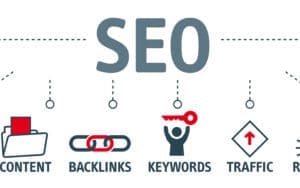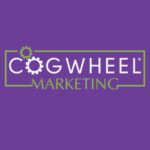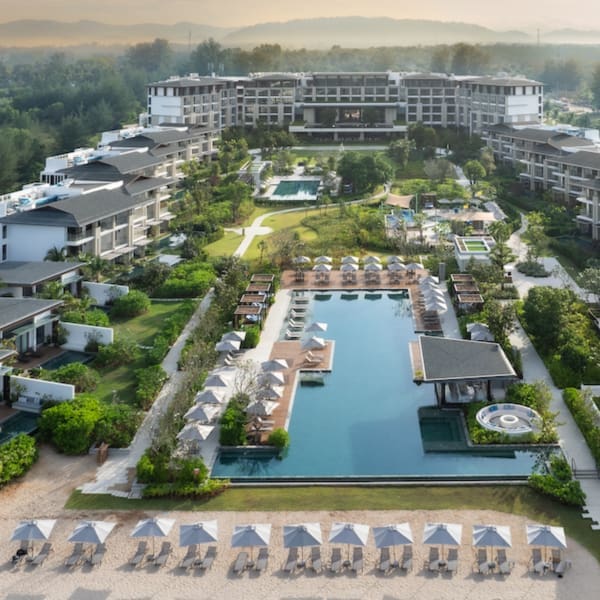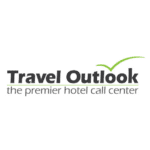
As Marriott updates their systems and new websites, it’s important to stay up to date on understanding the process, creating an SEO Strategy, and implementing best practices for your hotel.
First things first, Marriott changed their URL structure in 2022. This change is important to know because you will want to audit all of your listing URLs and backlinks to ensure that all online platforms and listings have the new URL. The difference between the old and new structure is minor and is highlighted below.
The old URL structure is: www.marriott.com/hotels/travel/yhzmc-halifax-marriott-harbourfront-hotel/
The new URL structure is: https://www.marriott.com/en-us/hotels/yhzmc-halifax-marriott-harbourfront-hotel/overview/
Even when done correctly, changing your URL structure causes Google to have to re-index your website and can take time. Making sure your hotel website is indexing all pages of value that are important for your organic search rankings. Utilizing a tool like Moz and SEMRush or running a tool called Screaming Frog can help distinguish which pages are being indexed and which pages are not being indexed.
What does it mean when a page is not being indexed: a page not being indexed means Google can’t find it. With any new URL structure, if there hasn’t been any traffic to your m.com internal pages, you need to identify why Google can’t find your page. There are multiple reasons why this happens. For example, it could be because of crawl errors, broken redirects, content quality, etc.
With a new URL, that also means you need to update all of your backlinks by implementing a backlink outreach strategy with the updated URL to ensure you are capturing the value. Requesting a backlink is literally as easy as sending an email to a website contact and asking nicely ‘Can we get our name put on your site on Page X and make it link to this page on our site.’
Help Guide for Backlinking Outreach
If you haven’t updated the quality links that link back to your hotel website (i.e. your CVB listing, any local sites your hotel is featured on etc.) with the new URL structure, your future guests will land on a 404 error or non-existent webpage. If you have not built a backlink outreach strategy, audit the backlinks of the old URL and reach out to the contacts of relevant links with an updated URL or find a service provider to handle for you.
Another very important change that recently happened is Marriott just sunsetted the EPIC system where some of the SEO updates used to be made and introduced Product Catalog.
Making the most of Marriott SEO opportunities is just one differentiating technique when understanding where brand marketing stops and individual hotel marketing begins.
Whether you are doing it yourself, hiring Marriott Digital Services or an outside agency, consider these factors when doing search engine optimization (SEO) for a Marriott branded hotel.
Factors in Marriott SEO
For ease, let’s divide our SEO strategy into 3 sections:
- On-site – What you do on your website to optimize for search
- Off-site – What you do on other websites to optimize for search
- Technical – The back-end aspects you can’t easily see to optimize for search
Pull Data for Analysis:
Before doing any of the above, determine what your current site is ranking for and pay close attention to what is already on page 1, what is hovering on page 2 that could be bumped up, and everything else.
If you are using Marriott Digital Services (MDS), they use a tool that can give you these data points. If not, using a service like Moz, SEMRush or Ahrefs will help.
If budget is a factor, you can open an incognito window and do manual searches. Be prepared for this to take a while!
For Marriott hotels, it is hard to tell from MRDW to see what is working versus not. The ECM1 report shows total organic traffic but nothing deeper than that. You can track visits per page, but not the source of that traffic.
You should also take a look at what terms you are going for in title tags/meta descriptions in order to see how that is impacting keyword ranking. You can review these by using a website crawling tool like Screaming Frog.
Then, determine your hotel’s unique selling propositions (USPs) and what sets them apart from their competitive set. Then list out your major demand generators that drive revenue to your hotel. These usually drive transient business and are rarely businesses or offices.
On-site Marriott SEO
Do keyword research to identify missed opportunities by using a tool like Moz, SEMRush (paid), or Google Ads (free). Look for keywords that may be less competitive like “hotels near demand generator”. Choose a keyword per page with terms that are most aligned. Include the keyword and hotel name in a unique title tag per page with a maximum of 60 characters.
Write a meta description that says why they should click on your website. This is where your USPs come into play. For example, when writing the meta for your rooms page, include unique room features for your hotel. Google uses meta titles and meta descriptions in the actual search results. It’s sort of like your opportunity to write a free ad. Putting your USPs drives this home.
You can also update SEO for modules once live. The page will go live with the default meta, then you can submit changes post-launch. These pages are also indexable in search with more opportunities for content, so take advantage of these pages for your meeting space, weddings, and restaurants.
Once you have a plan, submit the new title tags and meta descriptions via mPortal. The form you would use is the Core Hotel Website Maintenance request form then select the hotel. Next, the request itself is called the HWS Content Requests, where you select HWS Metadata Request.
Next, you will need to make updates to your website content and header tags, where applicable. This will be done in Marriott’s new Product Catalog that has replaced EPIC. Keyword density holds less value than it used to and you definitely do not want to keyword stuff – i.e. put “hotel in new york” 6 times on the page. But, if you include a keyword in the title tag and header, you want to casually work it into the content as well.
For example, if you target a keyword with a demand generator on the Local Area page, be sure that the demand generator is mentioned in one of the Local Area Highlights in Product Catalog that show on the brand website.
Then circle back around to the pages that have a header tag to edit in Product Catalog.
- Currently, these headers are H2s on the following pages: Overview, Accommodations, Restaurants & Bars, and Experiences.
- Any Property Message title also shows up as an H3.
- On the Dining page, the name of the on-site dining options are H3s.
- On the Fitness page, the title of the pool is an H3, and where we normally put “indoor” and “heated”, etc.
- Not applicable on the Meetings & Weddings page.
A Marriott site is fairly small, in terms of pages, but utilizes the interlinking when available. For example, on the Accommodations page, the highlights allow a link (preferably internal) to another page. Property Messages also allow for a hyperlink. There are other sections where you can incorporate links to other sites, but linking to other sites will provide no SEO value to you, and it takes them off your site. Examples of this are Partner Information, Spa, Restaurants, and Experiences Highlights. Alternatively, if you are listing a local business or restaurant on your site, that can be used as leverage to ask them to add your link to their site, giving you an additional backlink. These links can all be updated in Product Catalog now and will no longer require a form to be filled out in mPortal.
Off-Site Marriott SEO
A backlink is any other relevant site that has a link to drive traffic to your website. The more reputable, related backlinks to your website, the higher your website will rank.
How many of these backlinks do you need?
Our suggestion of a backlink goal: more than the direct competition. We consider direct competition for SEO different from your typical competitive set. Search for terms that you would typically show up for in Google and select hotels that often come up near you in these searches. The volume of backlinks varies greatly per market and type of hotel. A full-service hotel will have more than a select service as there is more opportunity for backlinks when there are more dining outlets, meeting space, etc. An independent boutique will have more than a branded hotel simply because those hotels have to work harder to get traffic to their site versus being with a brand. Having a tool like Moz Link Explorer or SEMRush Backlink Analytics is handy for this research. As a Marriott hotel, you have the advantage of being linked to the Marriott.com domain which ranks 92 out of 100, which also helps your hotel website rank.
Asking for backlinks should be a natural extension of the sales team. If you don’t have the sales resources, reach out to your agency partner or PR partner for help. It is effectively extending your personal relationships into the online space. Be sure you are taking advantage of CVB and state tourism website opportunities by listing a property’s evergreen packages.
Create relationships with local demand generators and get on their website. If a demand generator has keyword search volume, create a package. Build packages around tickets or savings to a local attraction, shopping gift card to a local mall, etc. Your package can be optimized in MBOP.
You can pull an ECM3 report from MRDW and see if these new online partnerships drive any traffic. Here is how you pull that report:
Channel > eCommerce > Add New Property Report > ECM3 (Campaign Detail) > Traffic Source = Unpaid Referrer.
Operations teams can also help a hotel rank better in Google Search by focusing on Google Reviews. Additionally, make sure that Google reviews are being responded to regularly, this can be done in RIO SEO. Yes, getting Marriott Medallia reviews are important, but so are Google reviews.
Technical Marriott SEO
Unfortunately, this is outside your realm for Marriott hotels since they don’t allow any code modifications. You can use a free tool like gtmetrix.com to test and see for yourself.
All these combined components are essential when considering optimizing your Marriott brand website via search engine optimization. When you have finished here, consider optimizing your OTA listings, which doesn’t cost a penny!



















